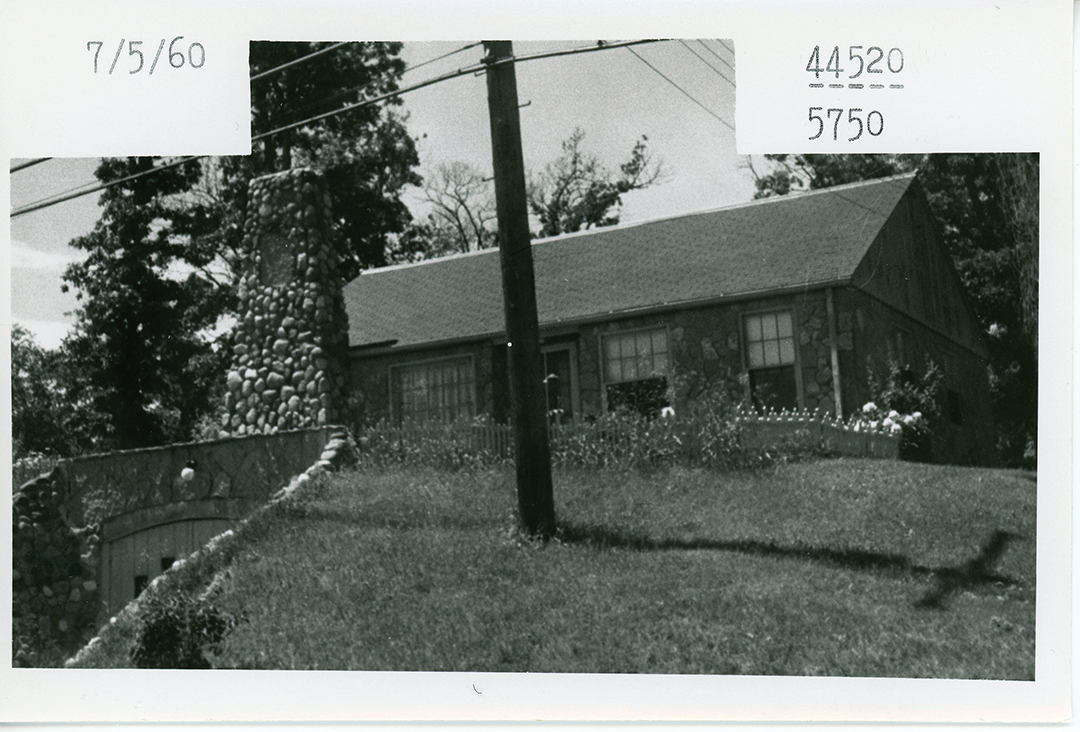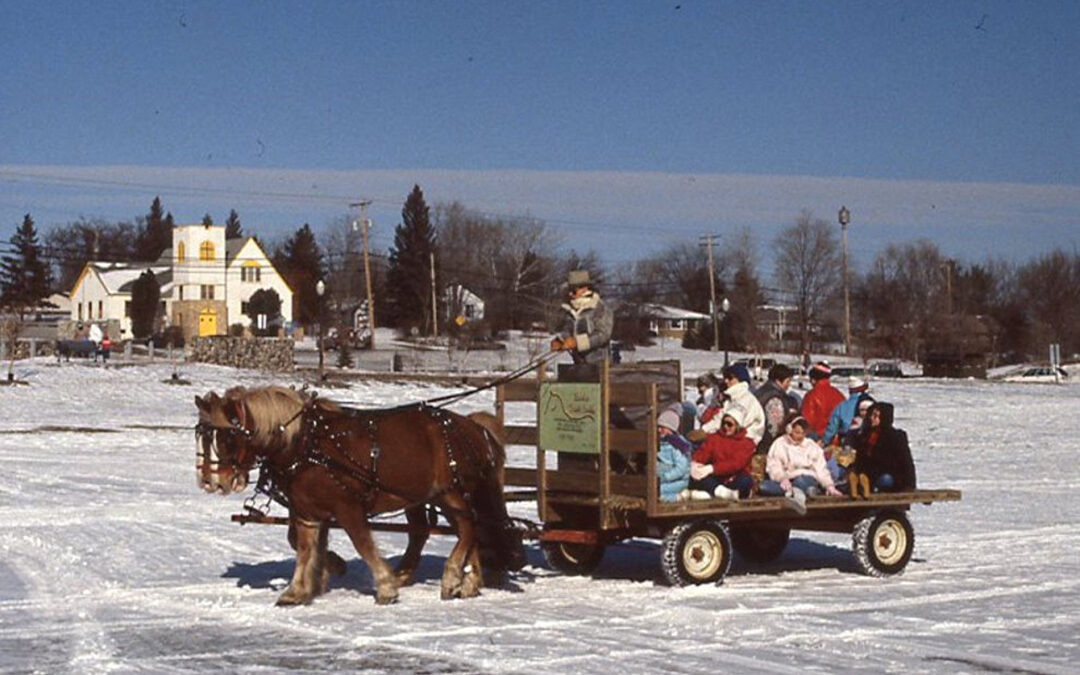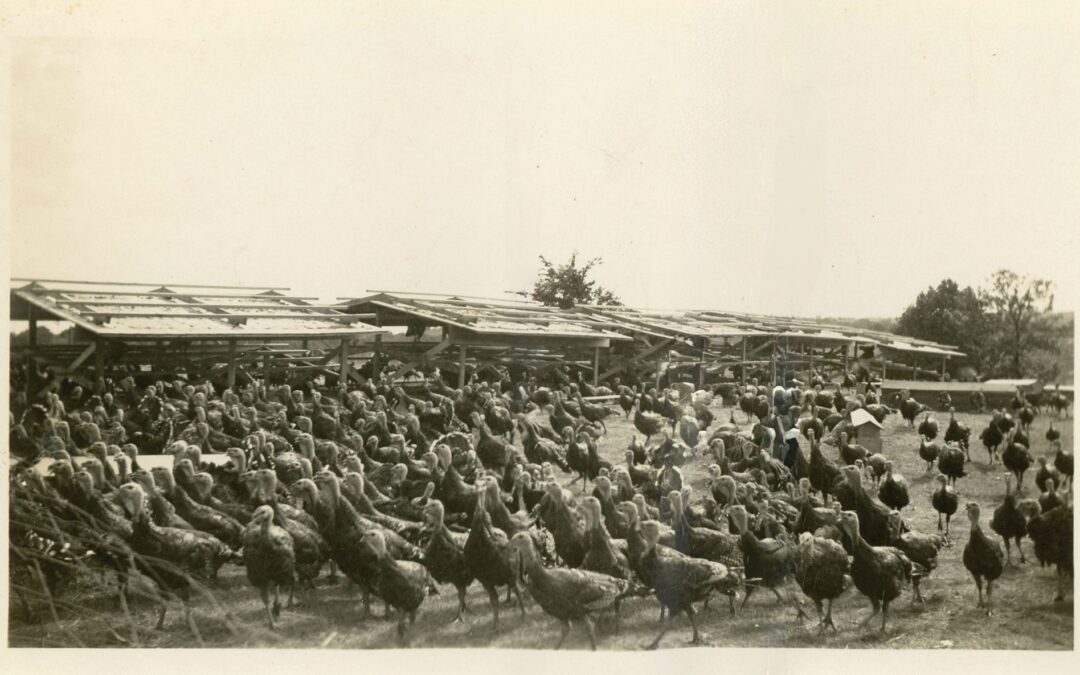
There are 15 property photos that the Plymouth Historical Society can’t pinpoint an address to—but this is no longer one of them. Photos: Plymouth History Center
Uncover the history behind a vintage home photograph.
The mystery started with an email from Plymouth’s Historical Site coordinator Ryan Barland. “[This photograph] is a house mystery,” he wrote. “Of the 3,000 property photos, there are about 15 that we can’t pinpoint a current address to.”
The Plymouth History Center’s clues were sparse: Perhaps it was torn down for Highway 169; Maybe it was in the Plymouth Gardens neighborhood. That information and a single photograph were the starting point for Amanda Zielike, co-founder of HouseNovel, and her team.
This photograph yields more information than you might initially expect. There’s the date it was taken on the left-hand corner, July 5, 1960, and Zielike suspects the numbers on the right-hand corner correspond to the county assessor’s records. But of even more significance are the location of the utility pole, the storybook cottage-style chimney and a cluster of trees in the background.
“A lot of those indicators can help you look at the aerial photographs,” Zielike says, which is exactly how research assistant Catherine Taylor narrowed in on the house. Tracking down the address was a different story.

Amanda Zielike and David Decker, founders of HouseNovel. Photo: Caitlin Abrams
HouseNovel is a house history database that grew out of the same impulse that fueled the search for this specific mystery house: curiosity (or, being a bit of a nosy neighbor). Zielike says she and her husband, David Decker, founded HouseNovel as a centerpoint to save, preserve and organize home histories.
“We originally were just a platform to connect people to crowdsource,” the Minnetonka resident says. “There’s a lot of tools and resources that we can provide to do it, but we learned that people wanted help researching home history.”
This Plymouth-based mystery served as a try-out for a researcher role to assist in three new research services on HouseNovel: stories related to a home’s address; a deep-dive into past owners of a home; and a detailed timeline of a home sourced from census records, city directories, newspaper clips and more.
“We needed people to understand what the job [of research assistant] is and what it entails,” Zielike says. “That actually helped us narrow down our top candidates for home history researchers and allowed us to show the crowdsourcing capability of different people working together using those clues to build it up and solve that mystery.” Taylor, a recent graduate of the University of Wisconsin with a major in history, was the candidate who was able to pinpoint the exact address of the home, but the process wasn’t without its twists, turns and—like any classic mystery—a red herring.
Find a detailed account of Taylor’s research process by searching the address 2250 Mendelssohn Ave. W. on housenovel.com.
Start Your Own Search
Amanda Zielike, co-owner of HouseNovel, identified a five-step process for tracking down Plymouth’s mystery house, but these steps can also be applied to your own house history search. She notes:
Step 1: Identify Key Records Available
Since census records become public after 72 years, we currently have access to records from 1950 and earlier. The 1930 census is likely the best place to start, as the highway was constructed within a year—if the home hadn’t already been torn down by then.
Step 2: Locate the Home in the Census
At the time, the home’s location was considered Plymouth Township, so we’d start by identifying its Enumeration District (ED) to narrow down the census records. Census records in 1930 were handwritten and organized road by road, so I’d sift through the 64 pages of Plymouth Township’s ED to find homeowner names and addresses. As needed, we can then look at older census records to track earlier ownership and changes.
Step 3: Cross-Reference with Historical Maps
Using Minnesota Historical Aerial Photographs Online, I’d overlay a 1930 aerial basemap with today’s map to compare how the area has changed. This helps determine exactly where the home was located before demolition and whether it was still standing in 1930.
Step 4: Validate Census Data with ancestry.com’s optical character recognition (OCR)
Since early census records were handwritten, ancestry.com’s OCR tools help identify spelling variations and transcription errors. This is especially useful for homes with inconsistent addresses due to manual data collection.
Step 5: Search newspapers.com for Homeowner Mentions
Before the 1980s, newspaper articles typically listed addresses alongside homeowner names. Searching homeowner names and address variations from census records can reveal sale records, obituaries or local history mentions.
HouseNovel
Instagram: @housenovel






















